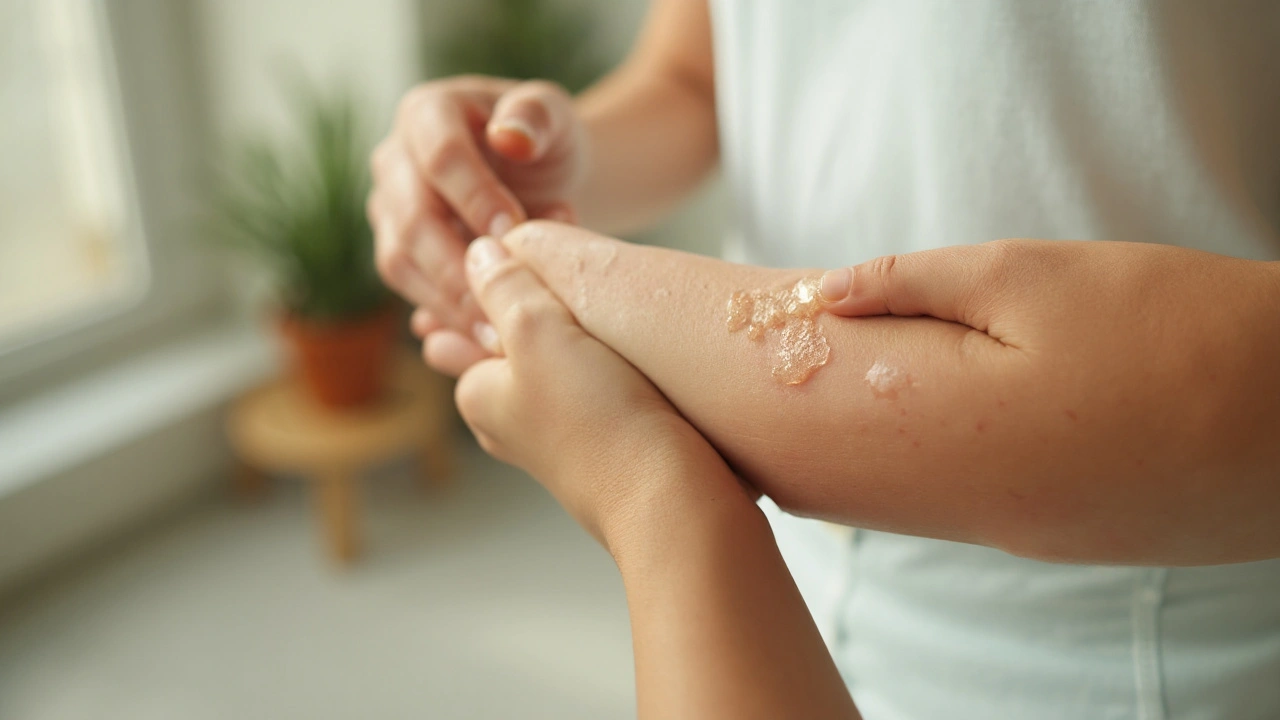Anti‑Inflammatory Aloe: What It Does and How to Use It
If you’ve ever reached for an aloe gel after a sunburn or a minor cut, you already know it feels soothing. What many don’t realize is that aloe also has strong anti‑inflammatory properties that can help with everything from joint aches to skin redness. This guide breaks down the science in plain English and shows you practical ways to add aloe to your routine.
How Aloe Reduces Inflammation
Aloe contains compounds called anthraquinones and polysaccharides that calm the body’s inflammatory response. When you apply aloe gel to the skin, those compounds enter the tissue and tell immune cells to dial back the swelling. The result is less pain, less redness, and faster healing. Studies on volunteers have shown a noticeable drop in skin irritation after just a few applications.
Inside the plant, the gel is mostly water, but the active ingredients are concentrated near the leaf’s inner lining. That’s why you get the best results from pure, cold‑pressed gel or a high‑quality store‑bought version that lists Aloe Barbadensis Leaf Juice as the first ingredient.
Safe Ways to Apply Aloe for Everyday Relief
For skin issues, a thin layer of gel works best. Clean the area, pat it dry, then spread a pea‑sized amount. Let it soak in; no need to rinse. You can repeat this two to three times a day. For joint pain, many people mix a tablespoon of aloe gel with a teaspoon of coconut oil and massage it into the sore spot. The oil helps the gel stay in place longer.
If you prefer a drink, look for aloe juice without added sugars. Start with a half‑cup mixed into water or a smoothie. Watch for any stomach upset—some people react to the laxative effect of aloe latex, the yellow part you should avoid.
Before you go full‑steam, test a small patch of skin for a reaction. Apply a dab of gel and wait 24 hours. If you see no redness or itching, it’s safe to use more broadly.
People with certain conditions, like kidney disease or a history of low blood sugar, should talk to a doctor before taking aloe internally. The same applies if you’re pregnant or nursing; the data isn’t clear yet.
Incorporating aloe into a balanced routine can complement other anti‑inflammatory steps, like getting enough omega‑3s, staying hydrated, and moving gently each day. Aloe isn’t a miracle cure, but it’s a low‑cost, low‑risk addition that many find helpful.
Bottom line: pure aloe gel works as a topical anti‑inflammatory, while aloe juice can help from the inside—provided you choose the right product and start slow. Keep the leaf’s inner gel, avoid the latex, and you’ll have a versatile tool for everyday aches and skin irritation.
 22 September 2025
22 September 2025
Aloe Vera for Fast Dermatitis Relief: Natural Healing Benefits
Discover how aloe vera soothes dermatitis, reduces inflammation, moisturizes skin, and offers a safe, natural alternative to steroids. Get practical tips and a clear comparison with other treatments.
Latest Posts
-

Anemia and Aging: How Nutrient Gaps Speed Up the Aging Process
-

Bloating after a meal: the importance of a balanced gut microbiome
-

The Impact of Diabetes Type 2 on Bone Health: Preventing Osteoporosis
-

FDALabel Database: How to Search Drug Labels Accurately and Efficiently
-

Imipramine and Diet: Foods to Eat and Avoid for Better Mental Health

12